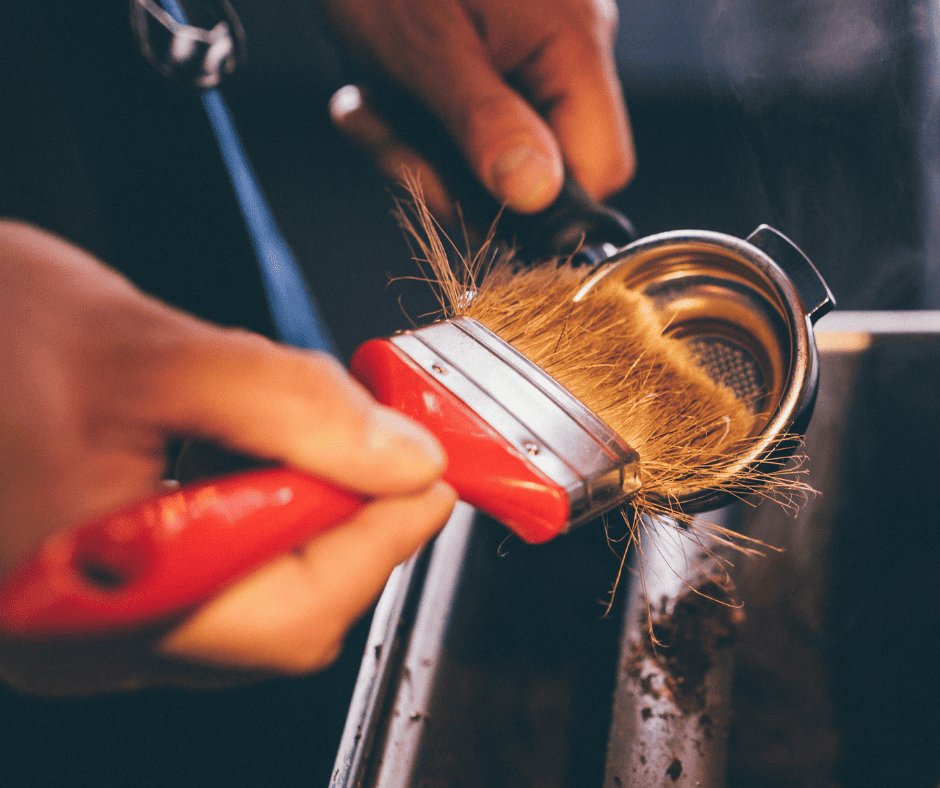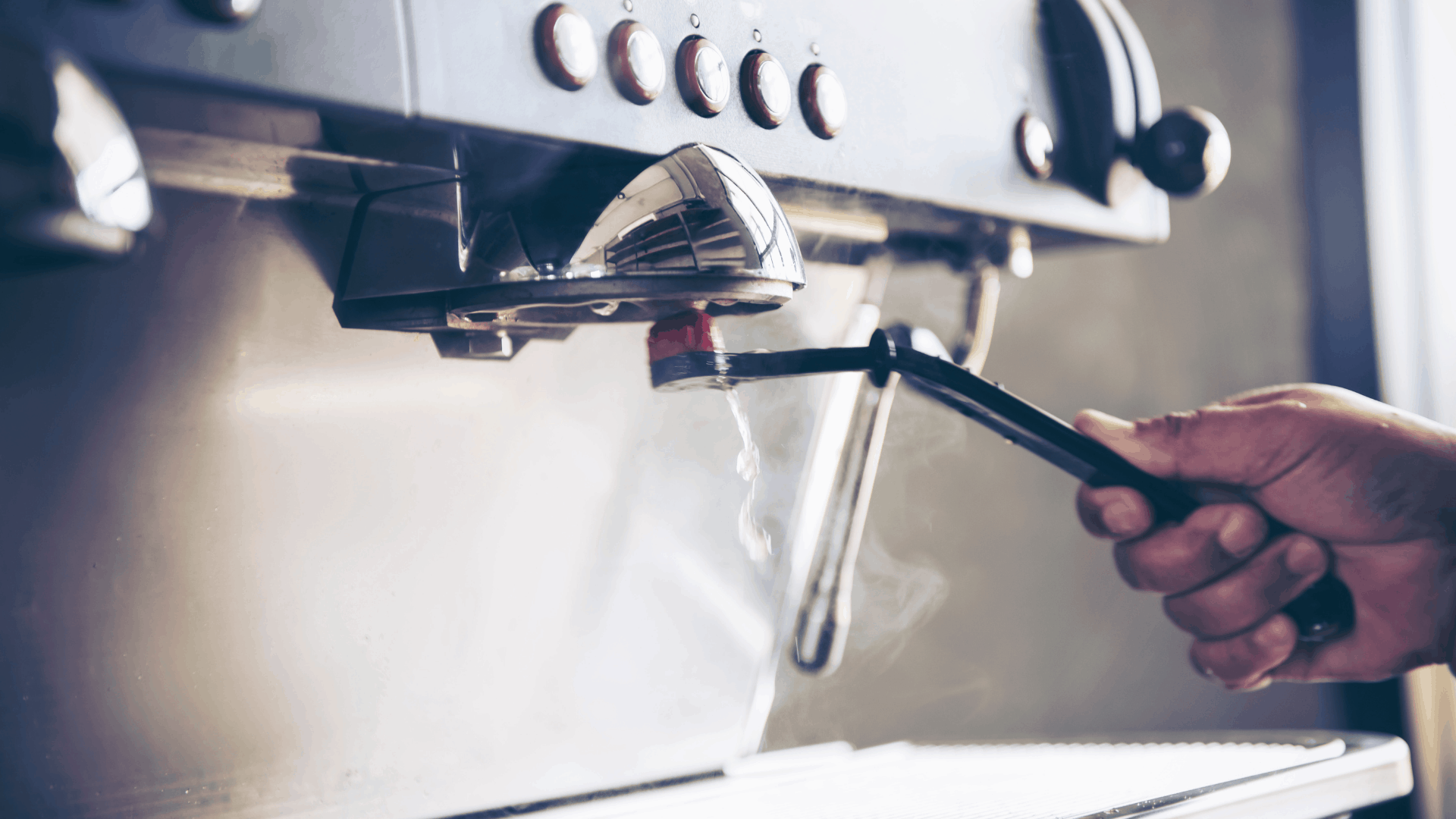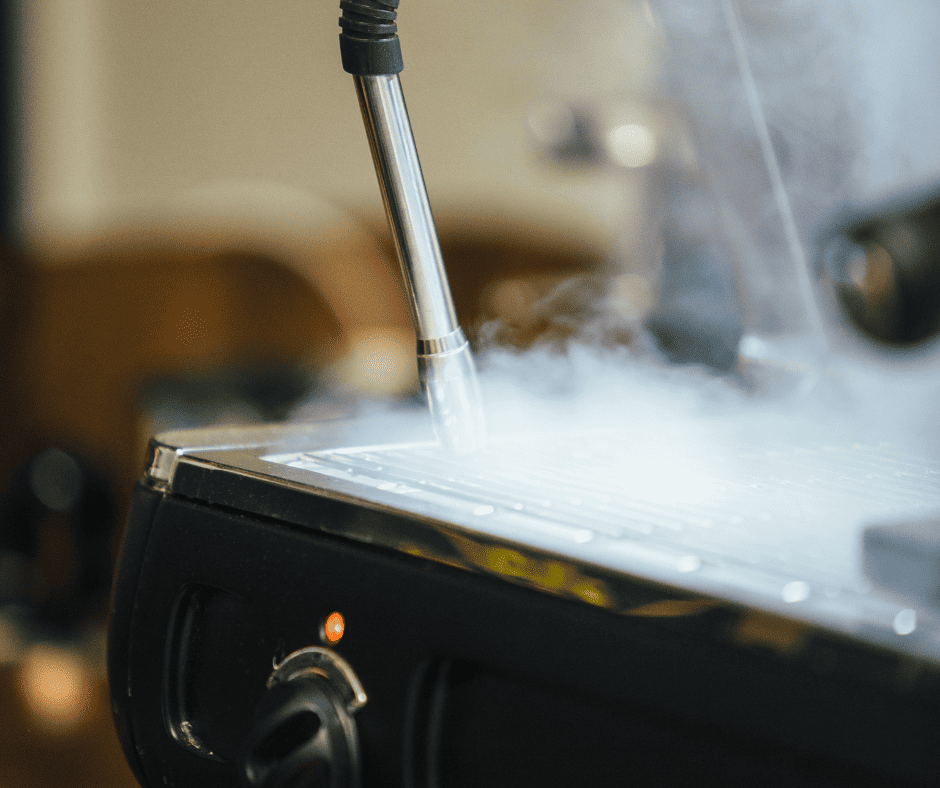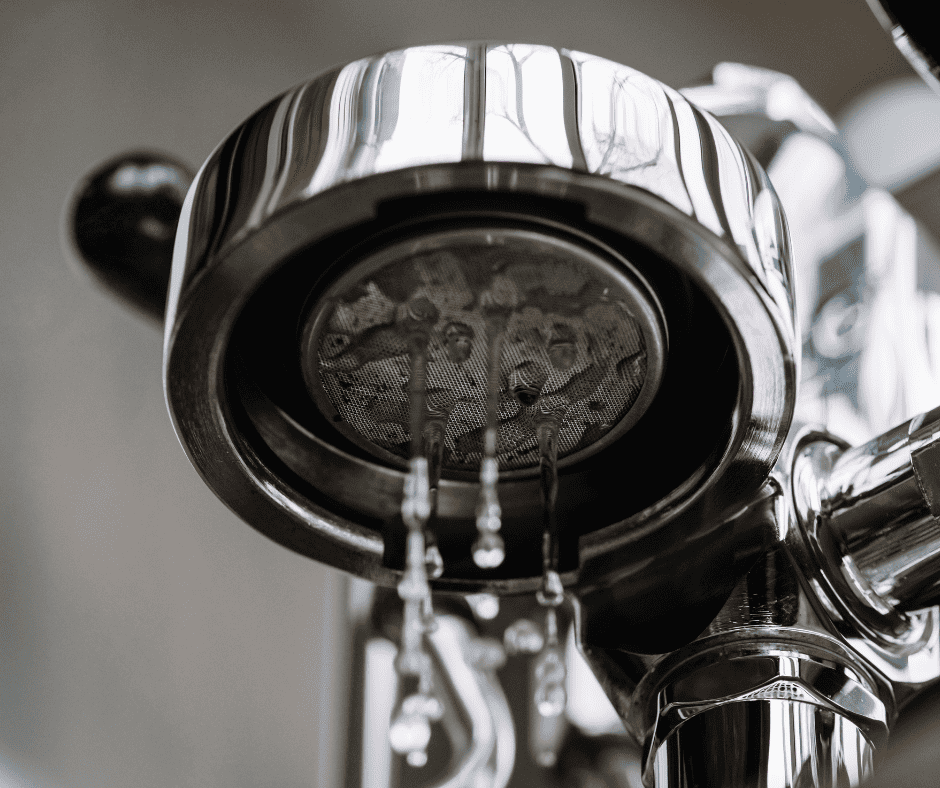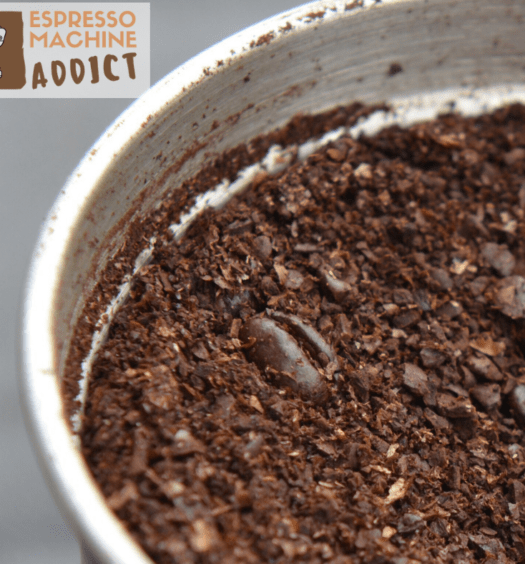Figuring out how to clean an espresso machine can be challenging, but will greatly improve the delicious taste and flavor of your coffee. These lovely coffee drink makers have a lot of different parts, making maintenance a bit more complex.
But that doesn’t mean you can’t tackle it. If you’re trying to figure out how to clean your espresso machine, here’s what you need to know.
How to Clean an Espresso Machine: What to Do First
Before you tackle any cleaning, review any instructions provided by the manufacturer. The manufacturer often outlines the steps you need to take to keep your specific machine in tip-top shape.
Why should you read the directions? Because the answer to how to clean your espresso machine may differ from someone else’s.
Most of the steps will indeed be the same. However, each espresso machine is unique, so you may need to take on (or skip) specific steps that others don’t. That’s why you want to review the instructions, ensuring you do exactly what’s needed to keep your machine in the best condition possible.
Daily Maintenance: How to Clean an Espresso Machine
While every espresso machine is different, certain cleaning steps are nearly universal. Here’s an overview of how to clean your home espresso machine for daily maintenance.
1. Scrub the Basket and Portafilter
After you brew your espresso each day, you want to give the basket and portafilter a good once-over. Take a scrub brush scrub brush and loosen any stuck coffee grounds. Then, rinse the basket and portafilter with some hot water before drying them off with a soft, clean towel.
2. Tackle the Gasket
You also want to give the gasket a quick scrubbing every day. Use your scrub brush to remove any grounds and loosen debris. After that, run a little water through the gasket to give it a good rinse.
3. Backwash the Espresso Machine
Review your instructions to see if backwashing is recommended by the manufacturer. If not, move on to step four. If so, attach the blind disk (the basket that doesn’t have any holes) to the portafilter.
Next, lock the portafilter in place and allow the machine to run for about 10 seconds. Then, remove the portafilter and dump the excess water. Repeat the process a second time. After that, wipe down the pieces with a soft, clean towel.
4. Sanitize the Machine’s Steam Arm
If your espresso machine has a steam arm and you used it to froth or steam milk, you need to sanitize it. Take a clean, damp towel and place it over the steam wand.
Turn the wand on for a couple of seconds, allowing the steam to flush out any milk residue. After about ten seconds of flushing the wand, take a soft, clean towel and wipe the arm down.
5. Wipe Down the Machine’s Surfaces
After cleaning the steam arm, give the entire machine a once-over. Dampen a soft, clean towel. Then, run it over every part of the espresso maker.
If you run into a stubborn spot, you can use a bit of vinegar mixed with water as a cleaner. Usually, one part vinegar to three parts water will do the trick. After using that mixture, give it another once over with a damp, clean towel.
Weekly Maintenance: Deep Cleaning Espresso Machines
If you make espresso daily, you’ll need to do a deep clean once a week. Usually, you’ll want to grab some quality espresso machine cleaner, as it’s specially formulated for the task.
Once you have the espresso machine cleaner, read the directions. It will tell you precisely what you need to do to handle cleaning your espresso machine right. However, if you want a general idea of the steps involved, here’s a quick step-by-step overview.
1. Mix the Espresso Machine Cleaner
Dissolve the espresso machine cleaner in water, per the directions.
2. Disassemble Your Espresso Machine
When you’re doing a deep cleaning, you want to remove any removable parts. This includes your portafilter, basket, drip trays, steam wand, and screen. For the screen, you may need a small screwdriver to detach it.
3. Soak and Scrub Down Detached Parts
Depending on the espresso machine cleaner, you may be able to soak the parts. If your machine is used heavily, this can be a great way to loosen excess coffee debris before scrubbing the pieces.
However, if your cleaner is meant for scrubbing only, then go that route. Use a scrub brush and give each piece a thorough wash and cleaning.
4. Rinse Detachable Parts
Once each of the parts is scrubbed, rinse them thoroughly with warm water. Then, dry them off with a clean, soft towel.
5. Wipe the Machine’s Exterior
Take a little bit of the cleaning solution and wipe down the exterior of your espresso machine. Then, grab a clean towel and dampen it with warm water, allowing it to work as a rinse.
Make sure all of the cleaner is rinsed away. If necessary, give it multiple passes with the water-dampened towel before moving on.
Finally, take a clean, dry towel and dry the machine.
6. Reassemble
Once everything is rinsed and dry, reassemble your espresso machine.
Monthly Maintenance: Descaling an Espresso Machine
Unless you used distilled water to make your espresso, minerals build up in your machine. That’s why descaling an espresso machine is so important. It ensures that buildup of hard water is washed away.
If you need to descale your machine, here’s an overview of the process.
1. Prepare the Descaling Solution
Generally, you have two choices for a descaling solution. First, you can use a commercial descaler. With that, follow the instructions to create the solution.
Second, you can use white vinegar as a descaler. With this approach, you want a 1:1 ratio of vinegar to water when you create the solution.
2. Pour the Solution into the Reservoir
Once the descaling solution is ready, pour it into the espresso machine’s reservoir.
3. Run the Steam Wand
Place a large measuring cup under the steam wand. Turn on the wand and allow about one cup of descaling solution to run through it. Turn off the wand.
4. Let It Soak
After running the steam wand, turn off your espresso machine and let it sit for about 20 minutes (or as long as the descaler instructions state). This gives the solution time to do its magic.
5. Run the Espresso Maker
Turn on your espresso machine and run it. You want about half a cup of solution to come through the portafilter and another half cup to go through the steam wand.
6. Let It Sit Again
Allow the solution to sit again for about 20 minutes.
7. Flush the Solution Out
After the second rest, flush out all of the remaining descaler. Send half through the portafilter and half through the steam wand. Use a container to catch the solution as it exits the machine.
8. Rinse with Clean Water
Once the solution is out, fill the reservoir with clean water and run half through the portafilter and half through the steam wand. Refill the reservoir with water a second time and repeat the flushing process.
9. Wipe Down the Machine
After the rinse, wipe down the entire machine. Make sure all solution and water are cleaned off of the exterior. Once that’s handled, you’re ready for an iced coffee or a steamy espresso.



